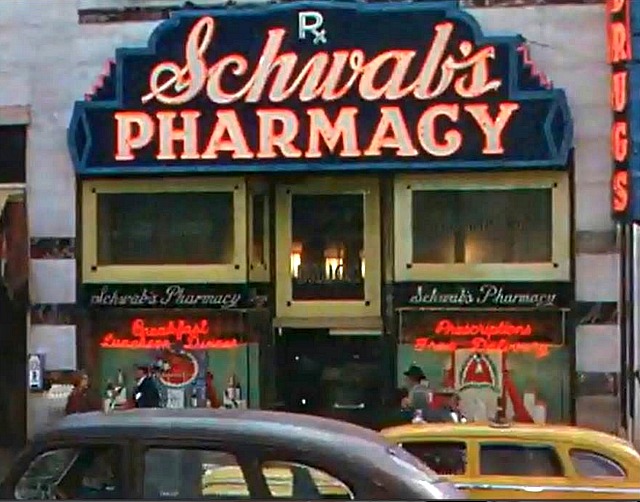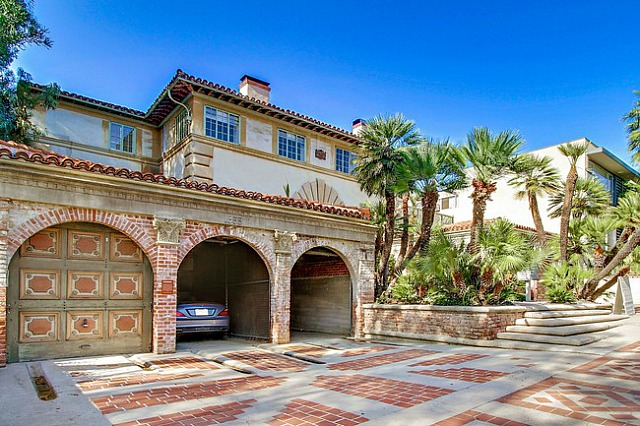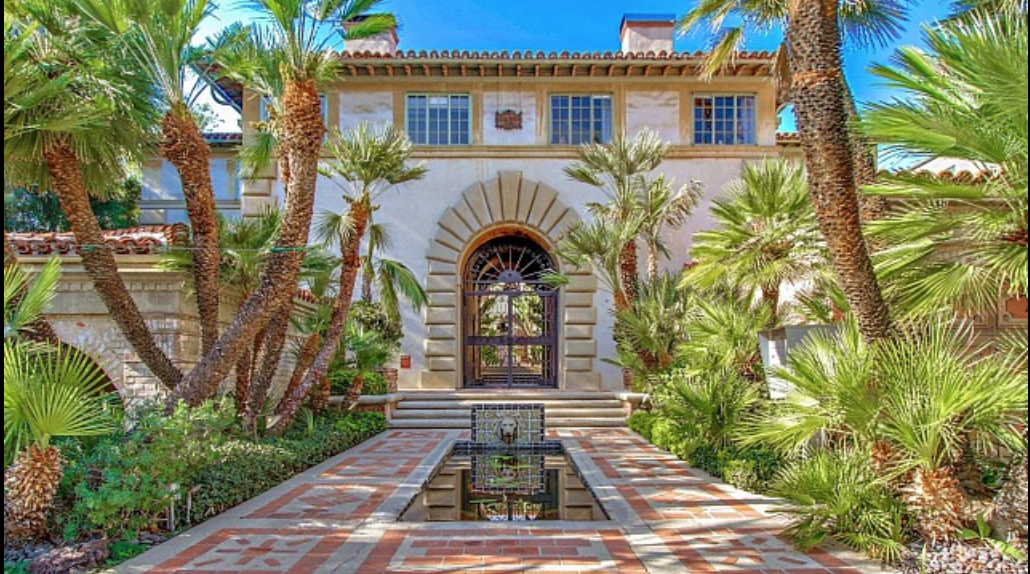West Hollywood has several classically designed apartment buildings (old Spanish, brick and stucco, shaded patios with fountains). I’m speaking of the area south of the Strip, north of Fountain and west of Fairfax, and principally on Laurel, Hayvenhurst, La Jolla and Harper Avenues. You can really feel the history and the ghosts, especially if you do a little research beforehand. The Strip was definitely cooler back in the ’20s, ’30s, ’40s and early ’50s. Preston Sturges‘ The Players, the Garden of Allah apartment complex, etc.
After eating last night at the decent but unremarkable Wokcano (Sunset and Crescent Heights, site of the old Schwab’s Pharmacy), Tatyana and I did a little strolling around. We didn’t do the whole classic-era tour but we hit three buildings.


First was the Villa d’Este, a beautiful Spanish-style apartment complex (arched entrance way, lots of palm trees, centrally located patio fountain) located at 1655 No. Laurel. Then we visited the 90-year-old Villa Primavera courtyard apartments (corner of Harper and Fountain), otherwise known as the In A Lonely Place residence where director Nicholas Ray actually lived. And then across the street to the Romanesque Villas (1301 No. Harper), where Marilyn Monroe lived around the time of The Asphalt Jungle.
The Villa d’Este was the setting of Under The Yum-Yum Tree (’63), a negligible Jack Lemmon horndog comedy. Never seen it, never will. The trailer is very convincing.
Lemmon was the hottest guy in Hollywood after starring in the one-two punch of Some Like It Hot (’59) and The Apartment (’60), both directed and co-written by Billy Wilder. Because the latter mixed ascerbic humor and frankly sexual situations, Lemmon was offered almost nothing but frothy sex comedies for five years following The Apartment. The only decent film he made during this period was Blake Edwards‘ Days of Wine and Roses(’62).
The sex comedies were The Wackiest Ship in the Army (’60), The Notorious Landlady (’62), Irma la Douce (’63, minor Wilder), Under the Yum Yum Tree (’63), Good Neighbor Sam (’64) and How To Murder Your Wife (’65). He also costarred that year in The Great Race, a period costume comedy about arch humor, empty artifice and scenic splendor.
Lemmon finally broke out of that shallow, synthetic cycle with Wilder’s The Fortune Cookie (’66). Not grade-A Wilder but certainly half-decent, and a great boost for Walter Matthau. And then Luv, The Odd Couple, The April Fools, The Out-of-Towners, Kotch, Avanti! and Save the Tiger. And then he hit another wall with Wilder’s The Front Page.


